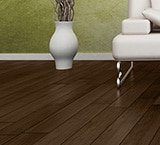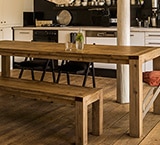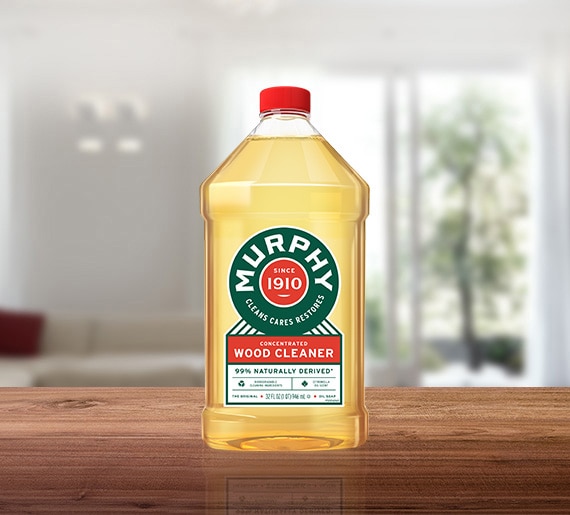HARDWOOD FLOORS & FLOORING
Cleaning Wood Floors: Five Must-Have Items

Cleaning Wood Floors might seem complicated, and even a little worrisome. Nobody wants to damage their beautiful floors, and conflicting information abounds on keeping them looking their best. But it actually doesn't take much effort or expense to clean your wood flooring. With the right tools and techniques, your floors can maintain their luster and warmth for many years.
VACUUM
A vacuum cleaner is one of the most important wood floor cleaning tools in a homeowner's arsenal. Vacuuming wood floors with the spinning brush turned off, or with an attachment made for wood floors, removes small dirt particles from the floor without scratching or denting the surface itself. Dirt typically causes the small scratches and flaws you might see on a wood floor's finish.
DUST MOP
A dust mop with the ability to use different padded attachments makes quick cleanup of your wood floor easy. Used correctly, dust mops can remove dust, pick up small particles, clean spills and set you up for the proper application of Natural Cleaners in the event of a deeper issue. A dust mop also cleans in hard-to-reach areas, like under sofas and tables. This inexpensive tool ranks as a must-have for cleaning wood floors.
MICROFIBER ATTACHMENTS
To properly maintain your floor's shine and finish, use soft microfiber attachments on your dust mop. Reusable and washable, these attachments last for a long time. An attachment designed for dry mopping will gather dust and small particles, whereas an absorbent attachment works for cleaning spills. Finally, this accessory for polishing the floor will help improve the shine of your hardwood and add a layer of protection at the same time.
WOOD CLEANERS
When cleaning, wood floors look their best when you use the right kind of solution. Avoid using an excess of water to mop your wood floors, as the wood may absorb the moisture, causing stains, warping and even mold later on. Also, keep away from acid-based formulas, which can damage the finish. You'll also want to watch for abrasive cleaners that can scratch the surface even if you're gentle in your approach: Many people recommend vinegar as a DIY floor cleaner, but according to SFGate, its high pH level can cause more harm than good to a hardwood finish, dulling the surface and wearing the floor down as a result. Natural cleaners use gentler additives that get you the shine you want without the side-effects you worry about.
ADDITIONAL TOOLS
Using a soft microfiber rag, a spray bottle with a mild soap and water mix works best to clean up spots, residue, stickiness and anything stuck to the floor. Spray soapy water directly on spots that need to be cleaned, but allow it to soak only long enough to remove the residue. Taking shoes off or having dirt-attracting mats at each entrance of your home can also prevent dirt from wearing your floor. The best indoor mats are acrylic and long enough to walk across with both feet, according to Reader's Digest.
Cleaning your wood floors regularly keeps them in good condition for many years. Vacuuming at least once a week in low-traffic areas, and where needed for high-traffic areas, prevents damage to the surface. Use your dust mop as often as once a day in busy areas that collect bacteria most often. Though it sounds like a lot, it only takes a few minutes. And always clean up liquid spills as soon as possible so you don't need more extensive work done in the future.
This article was brought to you by Colgate-Palmolive Company, the makers of Murphy's® Oil Soap. The views and opinions expressed by the author do not reflect the position of the Colgate-Palmolive Company.









